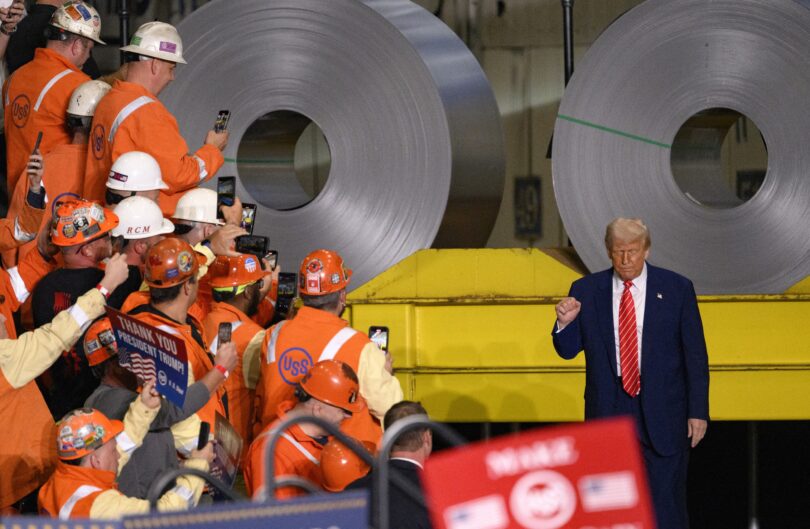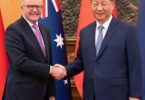Trump Proposes Doubling Steel Tariffs to 50% in Appeal to Steelworkers
WEST MIFFLIN, Pa. 30 may ,2025
This report generate using Google GEMINI AI
Donald Trump recently announced his intention to impose a 50% tariff on imported steel, a significant increase from the current 25%.1 This declaration, made during a visit to a steel plant in Pennsylvania, was presented as a critical step to bolster and revive the American steel industry. Trump emphasized that this steep tariff hike would be crucial for securing the industry and maintaining domestic control over vital manufacturing capabilities.
The announcement also touched upon a major agreement involving a prominent Japanese steel company and a leading American steel producer. While the specifics of the deal were still being discussed, Trump indicated that it would ensure the American steel company remains under U.S. ownership, avoid layoffs, and include substantial investment in its facilities.He further pledged a significant bonus for steelworkers, assuring them that this collaboration would safeguard American jobs and control.
Trump argued that the existing 25% tariff on steel imports, implemented during his previous term, wasn’t enough to fully counter foreign competition. He believes that at 50%, imports would be significantly curtailed, further securing the U.S. steel industry and providing a substantial boost for American steel and aluminum workers.
For years, Trump has consistently advocated for tariffs as a strategic tool to create a more equitable playing field for American manufacturers and reduce dependence on foreign imports. He frequently links a robust domestic steel industry to both national security and economic prosperity
While the proposal was met with enthusiasm by the steelworkers present, the idea of a 50% steel tariff has sparked considerable debate and concern among economists, businesses, and international trade partners.
For the U.S. Steel Industry and Its Workforce:
- Supporters contend that higher tariffs would diminish the competitiveness of imported steel, thereby boosting demand for domestically produced steel and protecting American jobs. They often point to the growth of the domestic steel industry during a previous administration’s use of tariffs as evidence of their effectiveness.
- Concerns exist regarding the long-term viability of such high tariffs and the potential for increased steel prices.8 While higher prices might benefit domestic producers, they could also negatively impact industries that rely on steel as a primary input, such as automotive manufacturing, construction, and appliance production.9
Broader Economic Implications:
- Many economists caution that dramatic tariff increases can lead to elevated consumer prices as companies pass on the higher costs of imported materials. There are also apprehensions about potential retaliatory tariffs from other nations, which could escalate into broader trade disputes and disrupt global supply chains.
- Major trading blocs and countries have already voiced their dissatisfaction with such a proposal, indicating that it could undermine ongoing efforts to resolve trade disputes and introduce further instability into the global economy. Some have suggested they would be prepared to implement countermeasures if a mutually agreeable resolution isn’t reached.
- Neighboring countries and key trading partners for the U.S. steel industry could also experience significant adverse effects, with some labor leaders warning of direct negative impacts on their own workers and industries.
- This latest tariff proposal comes as some previous tariff policies are navigating legal challenges, adding another layer of uncertainty to the future of this trade strategy.
The American-Japanese Steel Partnership
Intertwined with the tariff announcement was Trump’s focus on a proposed partnership between a major U.S. steel producer and a Japanese steel company.13 While an earlier acquisition attempt of the U.S. company by the Japanese firm had faced opposition from both the previous administration and the current one on national security grounds, Trump now appears to endorse a deal that he claims would involve partial ownership and guarantee U.S. control.14 He highlighted the Japanese company’s substantial investment in U.S. steel production as a key advantage. However, some labor unions have expressed ongoing skepticism, seeking more precise details on how American jobs and control would genuinely be safeguarded.







